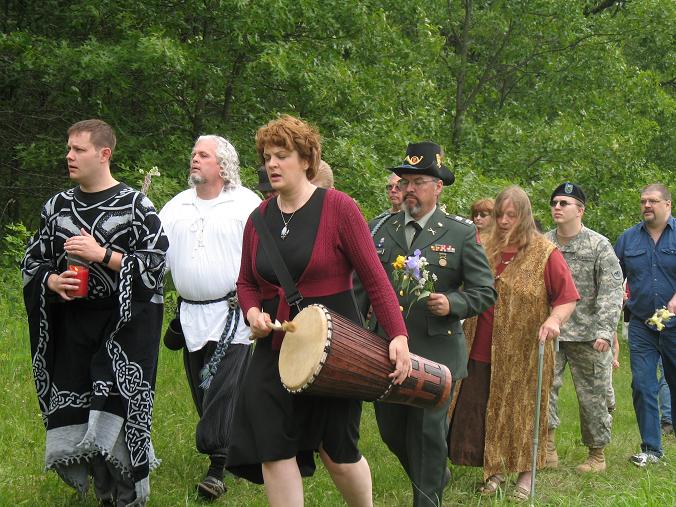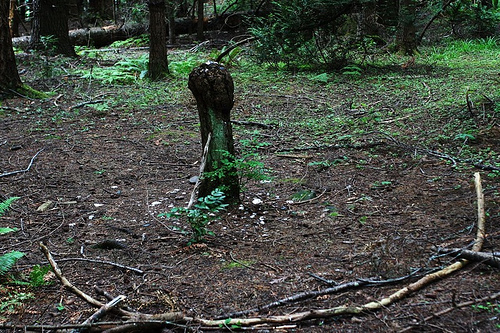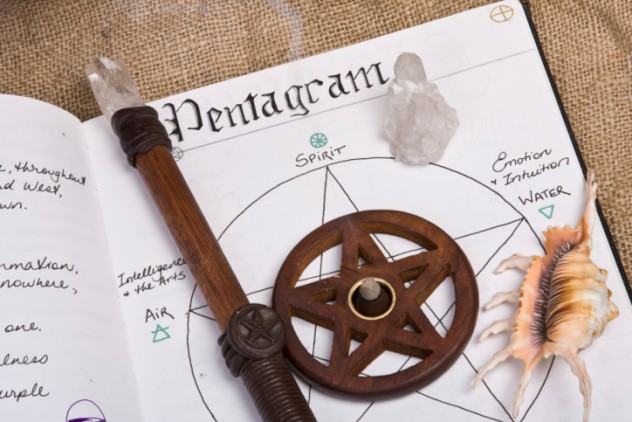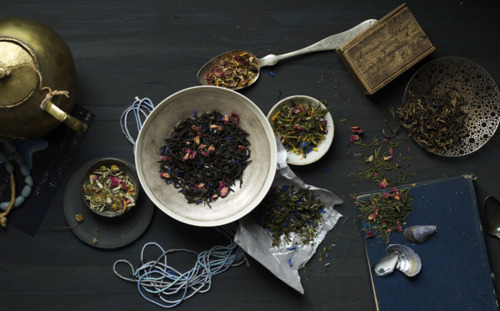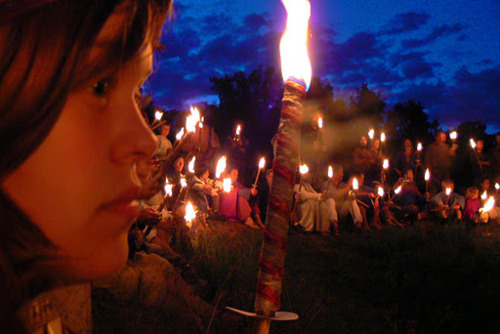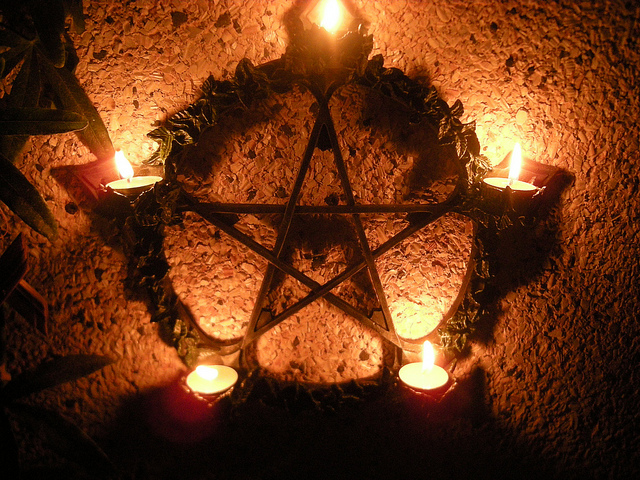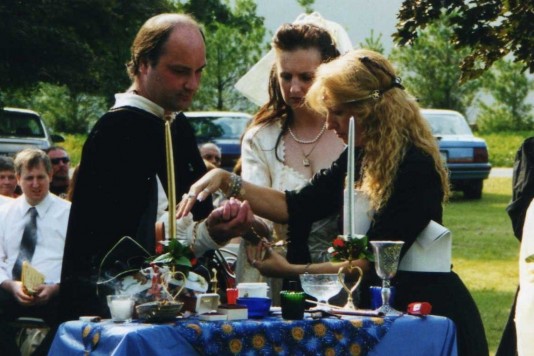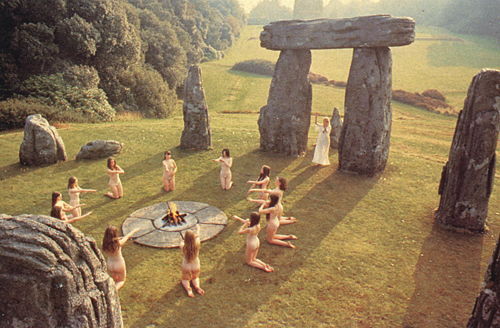10The Wiccan Rede
While a Wiccan can choose to be part of a coven, they can also practice on their own and decide what’s best for their own spiritual journey. Even covens vary wildly in how they go about things. However, many people may not realize that Wicca still has a very strong moral foundation despite those differences. The main laws of Wicca come from a poem called the Wiccan Rede. The poem was only published recently, but some Wiccans claim it has been handed down for generations and has ancient origins. While the entire poem is a bit long to reproduce in this article, you can read the full text here. The most important lines of the poem make up the main laws of morality in Wicca. The first law states “Mind the threefold law ye should, three times bad an’ three times good.” This is usually called the law of return or the threefold law and is similar to the idea of karma. The second comes at the end and states “An it harm none, do what ye will.” This law bears some similarity to the golden rule. So if you come across a true Wiccan, you don’t need to worry about them casting an evil spell on you—-it goes against their moral code.
9Casting The Circle
Sadly, many people’s idea of Wiccan rituals is very far removed from the truth. Wiccans do not sacrifice people and animals or commune with demons. The way Wiccans actually prepare a ritual is first to cast a circle twice about. The symbolic purpose of casting the circle twice is to honor both the God and Goddess of Wicca. After the circle is cast, prayers will often be said to the lord and lady. Candles can then be placed at the cardinal points of the circle to represent the four elements. After this, an altar is prepared in the exact middle, to represent the element of spirit. Wicca is very much a religion of fertility, placing importance on life continuing through the sacred bond of man and woman. In fact, two of the most important magical tools in Wicca are a ceremonial dagger, called an athame, which represents the phallus, and a chalice, which represents the womb. In rituals, the dagger is often dipped in the chalice to celebrate the union between man and woman.
8Book Of Shadows
Those who practice Wicca usually have something called a book of shadows. This is sometimes referred to as a sort of Wiccan bible, but it doesn’t really compare because there isn’t one textbook that all Wiccans follow. A book of shadows is actually more like a diary of a Wiccan’s own spiritual journey and is thus very personal. If you sneak a peek inside, it might not even be all that interesting. In fact, depending on the Wiccan, you might mostly find musings on all of their various dreams and attempts at magic, with very little in the way of spells to perform. Of course, when a Wiccan first begins training, their book of shadows may include many different bits of information taken from other practitioners, but as time goes by it will evolve into something uniquely their own. In modern times, the book of shadows isn’t even necessarily an actual book. For the sake of convenience and security, some witches choose to keep their books in digital form.
7Earth Religion
As we mentioned before, the Wiccans have both a God and a Goddess, but some Wiccans also believe in multiple gods and goddesses. While this may seem confusing, all of these beliefs share something in common. Wiccans are an earth religion, so the God and Goddess are in a way a representation of the Earth itself—where all magic power comes from. While some Wiccans may disagree on the number of deities, most agree that the genders need to be kept in balance, as they are representative of the balance of nature. Since Wicca is an earth religion, its practitioners believe in a cycle of new beginnings, and many Wiccans believe in reincarnation. However, unlike some religions where you might go backward if you don’t live properly, Wiccans simply go to Summerland when they die. Wiccans can stay in Summerland for as long as they like and return when they are ready to continue their path. For this reason, Wiccan funerals are referred to as a crossing and are more about celebrating the life of the one who has passed on. A Wiccan will be sad to lose someone they love, but they also believe that, just like nature, it is all part of a cycle of death and rebirth.
6Herbalism
Many people have a picture of witches and herbs that comes straight out of Shakespeare’s Macbeth, complete with a bubbling cauldron and all sorts of ghastly things being thrown in. However, the common perception of the ingredients in a witch’s herbal concoctions has less to do with Shakespeare and more to do with a simple misunderstanding. Many ingredients have folk names that would sound quite alarming to most of us but which actually just describe herbs. For instance, wild vanilla was sometimes referred to as deer’s tongue, and dandelions were referred to as lion’s tooth. But according to Wiccans, the misunderstanding of herbal medicine and the healers who use it goes back much further. Herbal medicine was very popular during Roman times. One method of healing was to create a small doll called a poppet, that was then filled with whatever herb was needed to help the afflicted person. Eventually, Christianity took hold and some Wiccans feel that the church unfairly persecuted them for their healing methods because it was competition for their miracles. However, despite the legal ramifications of performing healing magic, the practice continued, and has survived to this day.
5Black Magic
Many people are under the impression that Wiccans use black magic or worship demons, but this is absolute nonsense. At its core, Wicca is very much a neo-pagan religion. In other words it is built on the ideas of the old pagan religions that died out around the time when Christianity became popular. Most people’s idea of black magic has nothing to do with Wicca whatsoever. The Wiccan concept of black magic is not summoning demons or performing black masses. On the contrary, many Wiccans would simply call it negative magic and consider it any spell that hurt someone else, or attempted to help someone against their will. Now, some Wiccans might occasionally attempt negative magic, but most Wiccans are strongly against such practices and would remind them of the Wiccan Rede (stating that whatever you do comes back to you times three). In other words, if you perform negative magic you might enjoy the results now, but it will not be worth it in the long run. It is also important to note that not all Wiccans even practice magic at all.
4Warlocks And Witches
You just met your new Wiccan friend and everything seemed to be going well until you called him a warlock. Now he seems offended, but you don’t understand why. He is a male practitioner, so what gives? As it turns out, the word “warlock” has very negative connotations, and Wiccans actually use the word “witch” to describe both genders. “Warlock” has a long history and several meanings, but the old Scottish meaning the Wiccans are thinking of is “oath-breaker.” Some people believe the word came to mean that because it was used to refer to men who had “broken their oaths to God” by practicing witchcraft. While this might make the name somewhat less negative, it still seems unlikely that anyone would want to be called an oath-breaker. On the other hand, the word “witch” is almost always seen in a negative light, but it derives from the word Wicca and simply means to “bend or turn.” This is a completely neutral meaning and can apply to anyone who would use magic, whether good or bad. It is important then to point out that while all Wiccans are witches, that doesn’t mean that every witch you meet is a Wiccan.
3The Pentacle
The pentacle is the most important symbol in Wicca. It is sometimes mistakenly referred to as a pentagram, but that name is only correct if it is drawn or inscribed on something. Unfortunately for Wiccans, this has caused many people to become confused and conclude that Wiccans worship demons, but this couldn’t be any further from the truth. You see, the pentacle’s star has five points to represent the five elements of Wicca: air, fire, earth, water, and spirit. These five elements are usually drawn from densest to least dense, with spirit on the very top to show the importance of the soul above the elements. The circle is then drawn around it for protective purposes. Satanists do use something very similar, but they have perverted the Wiccan imagery for their own purposes. In the 19th century, an occultist named Eliphas Levi declared that an inverted pentagram was symbolic of a horned goat of lust, and it has since been associated with Satan. Hence when the Church of Satan was founded in the United States, they chose to use an inverted pentacle with a goat head on it as their most important symbol. So unless you see an upside down pentacle with a goat head, you aren’t dealing with a devil worshiper.
2Wiccan Rites
Wicca is a religion of fertility, so of course babies are considered a great blessing. To welcome a new baby into the world Wiccans have a rite called a wiccaning. It is suggested that new Wiccan parents perform the ceremony when the moon is waxing or full and aligned with the child’s astrological sign. A practitioner would then cast a circle, like they would for any magic, and light a candle inscribed with the child’s name, astrological sign, and date of birth. While there are many possible variations to the ceremony, the main idea is that the child is blessed and prayers are offered as the parents celebrate their child’s entrance to the world. It is important to be clear that while a wiccaning may sound like the Christian rite of baptism, Wiccans do not have any concept of original sin. It is not a ceremony meant to purify the baby, but simply to bless them. Handfasting is the Wiccan version of a traditional marriage ceremony, but it has some key differences. The first rite of handfasting is “for a year and a day, or as long as love shall stay.” This can be considered a sort of trial union for very serious couples. If a couple is still serious after this, they may go through a second rite of handfasting, which usually involves a legal marriage agreement. There is also a third rite, called a handparting, that is the Wiccan version of divorce. However, unlike most divorces where the couple are fighting over who gets what stuff, Wiccans are meant to remain friends when parting, and always be open to being together again if they choose.
1Skyclad Practice
Perhaps one of the most controversial practices of Wicca is skyclad worship. For those who don’t know, skyclad means “complete nudity.” Many people might find the idea of naked worship strange, but it is not a particularly new religious practice and dates back at least as far as the Roman Empire. Neither has it been confined to pagans—there have been branches of Christianity as far back as the Middle Ages that observed such practices. More important is the misunderstanding most people have of naked worship. Those who practice it in a religious manner are not doing so as a form of sexual deviancy, but rather to bring themselves closer to their gods. Skyclad worship often features in Wiccan rituals because Wicca is a fertility religion. It is fairly rare for actual sexual acts to be performed as part of a public ritual; instead the union of the athame and the chalice are used symbolically. It is also important to know that many Wiccans do not practice skyclad, and those who do are generally very respectful of others who are not comfortable with the practice. You can follow Gregory Myers on Twitter.
